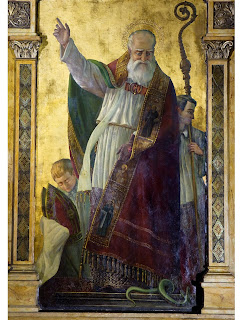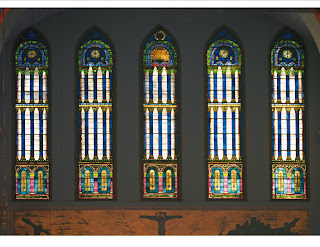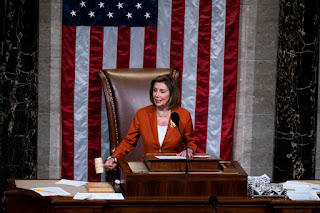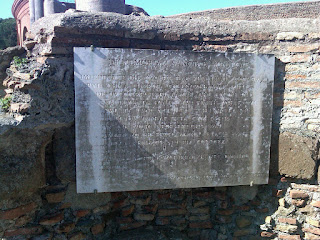According to a familiar legend (the veracity of which it is impossible to establish), Saint Patrick used a shamrock to teach the Trinity when evangelizing Ireland in the 5th century. Resorting to something like a shamrock illustrates some of the difficulty of talking about the Trinity. But I think the principal problem perhaps is not so much that the Trinity is a mystery, which we can never completely understand, but that it seems more like an abstract philosophical idea than an expression of religious experience.
I say this, despite the obvious fact that as Christians, our religious lives are all thoroughly permeated by our faith in the Trinity. We begin Mass and most of our prayers with the Sign of the Cross, blessing ourselves In the name of the Father and of the Son and of the Holy Spirit. The principal prayers of the liturgy are typically addressed to the Father, through the Son, in the unity of the Holy Spirit. Way back when, we were all baptized in the name of the Holy Trinity – the Father, and the Son, and the Holy Spirit. On that occasion, we – or our parents and godparents – all made a profession of faith in the Father, and the Son, and the Holy Spirit. Our sins have been forgiven many times, in the name of the Father, and of the Son, and of the Holy Spirit; and as a priest I have in turn many times absolved the sins of others, in the name of the Father, and of the Son, and of the Holy Spirit. As a priest I have also presided at weddings – at which rings have been exchanged, in the name of the Father, and of the Son, and of the Holy Spirit. The psalms in the Divine Office are all concluded – Glory to the Father and to the Son and to the Holy Spirit – and we do the same in our private prayers with each decade of the rosary. That doxology is amplified at Mass in the Gloria, that great hymn of praise to the Trinity that we say on most Sundays and feast days. As Saint Basil the Great said, back in the 4th century, we pray as we believe, and we believe as we have been baptized.
Admittedly, the doctrinal language we use to talk about the Trinity – words like “nature” and “person,” when used not as we use them in ordinary language, but as technical philosophical terms – may seem somewhat abstract. But the doctrine of the Trinity is our fundamental – and uniquely Christian – insight into who God is. Who God is – in his inner self – we cannot know on our own. That had to be revealed to us. Hence, God himself has revealed who he is – a trinity of Persons in one divine nature. Each of the three Persons, Father, Son, and Holy Spirit, is distinctly divine, their distinction residing in their relationship to each other: the Father to the Son, the Son to the Father, and the Holy Spirit to both.
On the one hand, the doctrine of the Trinity expresses our uniquely Christian insight into the inner life of God – where the Son is the image of the Father, the Father’s likeness and outward expression, while the Holy Spirit in turn expresses and reveals the mutual love of Father and Son. At the same time, the Trinity also expresses something fundamental about how God acts outside himself. Who God is in himself is how God acts; and how God acts in the story of salvation reveals who God is.
Already in the Old Testament, God was revealing himself – as he did to Moses in today’s 1st reading, as one whose nature is revealed in how he acts toward us: a merciful and gracious God, slow to anger and rich in kindness and fidelity. It was to such a God that Moses prayed – as we all pray – do come along in our company … and receive us as your own.
It is, of course, the Son, consubstantial with the Father, who, as the visible image of the invisible God, came down from heaven, so that the world might be saved through him. Risen from the dead and seated at the right hand of the Father, the Son has sent the Holy Spirit upon his Church, which is the Body of Christ and the Temple of the Holy Spirit. The Holy Spirit is inseparable from the Father and the Son, in both the inner life of the Trinity and his gift of love for the world. The Holy Spirit unites us with the Father in the Body of Christ, the Church. Through the sacraments, Christ continues to communicate the Holy Spirit to the members of his Church.
Hence, the Church faithfully follows St. Paul in praying: The grace of our Lord Jesus Christ, and the love of God, and the communion of the Holy Spirit be with you all!
Homily for Trinity Sunday, Saint Paul the Apostle Church, NY, June 4, 2023.
Photo: The Altar of Saint Patrick, designed by John La Farge, altarpiece painted by William Laurel Harris (1889), Saint Paul the Apostle Church, NY.




